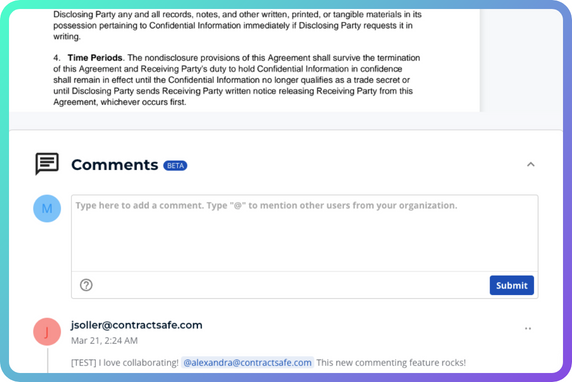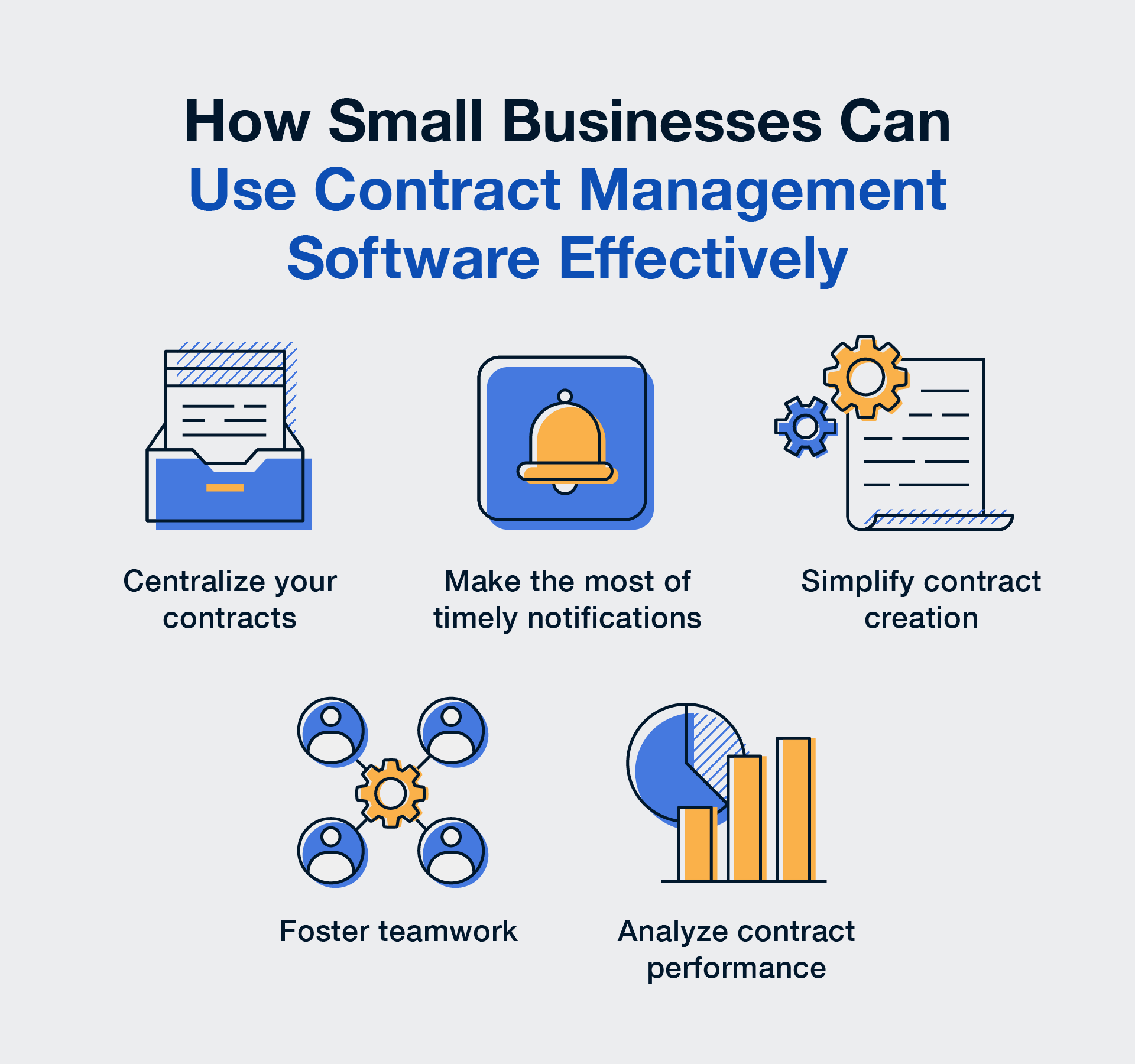Rapidly evolving technology continues to revolutionize the way business is conducted as automation and artificial intelligence pave the way for greater operational efficiency. Companies that fail to leverage technology to improve upon antiquated processes often find themselves at a competitive disadvantage and at risk of being left behind.
One business area where this is especially true is contract management. A company’s ability to transact is largely dependent on the speed and efficiency in which it can create, negotiate, execute and manage contracts with third parties. Having the ability to rapidly process the sale and purchase of goods and services has a huge impact on a company’s bottom line; yet, many are still reliant on slow, manual, and disorganized processes for managing the contracts that govern nearly every aspect of their operations. Businesses that conduct contract reviews via email, store documents in shared drives, and track renewals in spreadsheets are inhibiting transaction velocity. And while these businesses fumble with manual processes, their competitors are using automated contract management solutions to close more deals, purchase more products, and ultimately drive more growth.
In today’s face-paced environment, an electronic contract management system can help businesses keep-up. By storing contracts in a searchable, cloud-based repository with access controls and configurable alerts, businesses can significantly cut down on time spent manually searching for contracts, looking up deliverables, and tracking expiration dates. By automating manual processes and reducing risk, electronic contract management software can quickly produce a meaningful ROI.
The Problem With Manual Contract Management
Managing legal documents outside of an electronic contract management system can have disastrous consequences for companies of all sizes, though it is particularly problematic for large businesses with multiple subdivisions and strict compliance standards. Companies that manage contracts with ad hoc tools inevitably face mistakes and bottlenecks, which result in prolonged contract execution and significant legal risk. Below are the three most common problems that occur as a result of manual contract management:
Missed Deadlines
As a business grows, so does the volume of contracts that it must manage on an annual basis. Using a spreadsheet to track auto renewals and expiration dates quickly leads to missed deadlines. Companies that frequently miss contract dates run the risk of renewing unfavorable business terms or conducting business operations under an expired contract, both which can have significant financial consequences.
An electronic contract system provides employees with the tools needed to stay organized and plan ahead. By setting customized email alerts and assigning them to various platform users, departments can plan two or three months ahead of expiration dates. Electronic contract systems also provide filterable calendar views so teams can see a comprehensive view of all upcoming contract dates.
Lost Documents
A report published by the Journal of Contract Management suggests that 71% of companies surveyed couldn’t find 10% of their contracts. If a company can’t find a contract, how can it ensure that it’s complying with the terms of the agreement? Companies that fail to implement an organized contract management system often find teams storing confidential contracts in unsecured locations such as desktops and email folders.
Electronic contract systems provide a safe storage location for all of your company’s documents. By storing contracts in a centralized place, business leaders can not only prevent lost documents, they can ensure confidential information is safe and protected. An electronic system should provide a secure, cloud-based environment and take measures to protect documents from external access or cyber security threats. It should also greatly improve enterprise-wide contract accessibility by giving employees the ability to store and retrieve documents in seconds.
Longer Contract Lifecycles
Studies suggest it can take 20 to 30 days for a company to create, negotiate, and execute a contract, and for companies that rely on manual processes, that timeframe is likely much longer. In many cases, four or more teams are involved in the contract review process, so conducting a review via email will inevitably take a long time. The minutes spent searching through shared drives can quickly add up to hours each year, and juggling multiple contract drafts will likely lead to mistakes.
Electronic contract management is essential for shortening the contract lifecycle. By reviewing documents in a central location, as opposed to passing them back and forth through email, the time to execute a contract is greatly reduced. Furthermore, effective search tools can minimize the amount of time employees spend searching for agreements. An electronic system can also provide useful tools such as audit trails and versioning controls to eliminate mistakes and overwritten drafts.
Managing contracts is among the most expensive internal business operations companies face today. With hundreds of hours spend across dozens of teams, managing a single, simple contract can cost businesses up to $6,900 in employee salaries. Without an electronic contract management system, it would cost exponentially more. Companies that use unspecialized contract storage solutions stand to waste tens of thousands of employee hours each year. Long term, the results of a disorganized contract lifecycle include underperforming projects, missed payments, and even litigation. If your business is considering an electronic contract management system, there couldn’t be a better time than now.
















